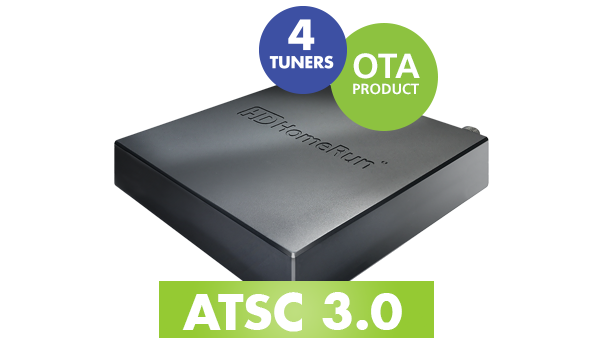
WASHINGTON—SiliconDust, maker of the HDHome Run 4K Flex NextGen TV gateway, met with Federal Communications Commission staff on July 31 to urge the regulator to take action to remove ATSC 3.0 digital rights management (DRM) encryption restrictions.
“SiliconDust wants ATSC 3.0 to succeed, however, the broadcast industry is attempting to use ATSC 3.0 to illegally limit access to public airwaves,” the company said in its notice of ex parte communications sent Aug. 1 to the agency.
Until the issue is resolved, the company asked the agency to postpone an ATSC 1.0 sunset and maintain the simulcast requirement so that its HDHomeRun customers can continue to access broadcast content.
At issue is the DRM encryption specification issued by the ATSC 3.0 Security Authority (A3SA) in February 2024 that SiliconDust said offers “no pathway whereby a video gateway vendor could write an app” for a wide variety of devices and platforms, “even if the device is a NextGen TV-certified television.”
The company told the eight FCC staff members it met with that “this A3SA specification is not a solution for video gateway devices but rather a list of special rules and requirements specifically targeting video gateway devices,” the filing said.
The A3SA specification prevents a video gateway device from working with a large number of player devices used to watch unencrypted 3.0 content today, it said. “This includes player devices that have been NextGen TV-certified.”
The 3.0 DRM issue is coming to a head as the FCC considers a petition for rulemaking aimed at sunsetting ATSC 1.0 and establishing a timetable for completing the transition to NextGen TV. Some SiliconDust HDHomeRun owners have filed comments with the commission objecting to 3.0 DRM restrictions preventing them from using their devices to watch what is being described as high-value programming—1080p HD HDR or higher.
The professional video industry's #1 source for news, trends and product and tech information. Sign up below.
Pearl TV, the business group representing several major broadcast groups, has laid the blame for the inability of the HDHomeRun gateway to make A3SA-encrypted programming viewable at the feet of SiliconDust, pointing to the company’s decision to use a System on a Chip (SoC) made by a subsidiary of Huawei, which the U.S. government views as a national security risk.
SiliconDust told the FCC that the A3SA specification creates a situation in which the TV receiver market is “no longer a free market,” adding that “vendors such as SiliconDust have to wait for the A3SA to write a specification telling them how their own product must work.”
The company told FCC staff the best solution would be deregulating the A3SA regulations. “Not allowing DRM on public airwaves is a solution. It is the solution that would be best for the U.S. consumer and for device makers.”
Noting this course of action would not require any change to the ATSC 3.0 standard nor existing products, the company told the agency that deregulation would “restore fair-use rights” of consumers and “restore the free-market for TV receivers.”
A second solution would be to require the same DRM used by streaming services. Quoting an NAB reply comment, SiliconDust said the association’s comment indicates it “finds the encryption (DRM) approach used by ‘YouTube and other free streaming services’ acceptable.”
The NAB statement is something SiliconDust could implement, but the company said it could not speak for its users who filed comments about whether or not this approach would be acceptable.
While the SiliconDust filing was quite thorough, it did not address the Huawei national security risk issue that Pearl TV raised in July.
The company concluded by saying the current situation is unprecedented. “Never in the history of television and radio has a receiver been effectively denied access to tuning the public airways as the SiliconDust HDHomeRun has,” the filing said. “This must be stopped.”
“If DRM is to be forced on the American people, we ask that it be open for public review and comment. We ask that there be protections to keep the TV receiver market a free market. We ask that there be consumer protections to protect long-established fair use. We ask that it not exceed that of ‘YouTube and other free streaming services.’ And we ask that broadcasts be DRM-free until such time as the DRM approach is approved by the FCC,” the filing said.
Phil Kurz is a contributing editor to TV Tech. He has written about TV and video technology for more than 30 years and served as editor of three leading industry magazines. He earned a Bachelor of Journalism and a Master’s Degree in Journalism from the University of Missouri-Columbia School of Journalism.

